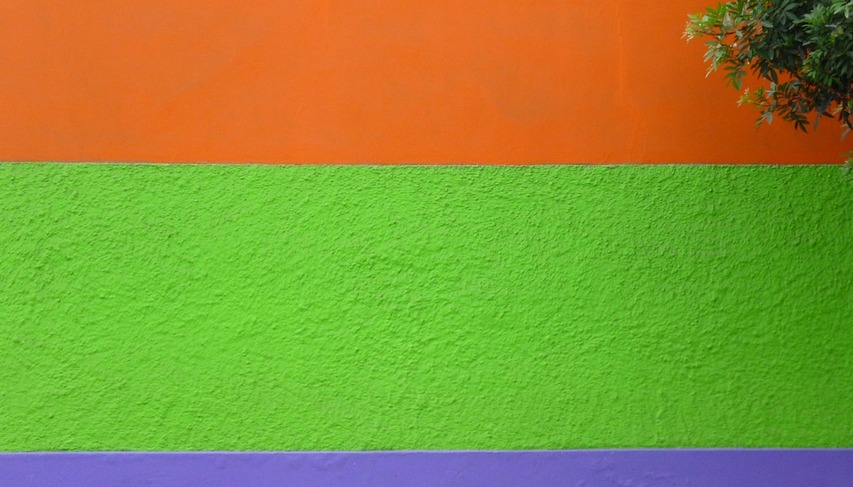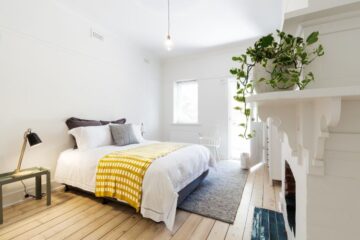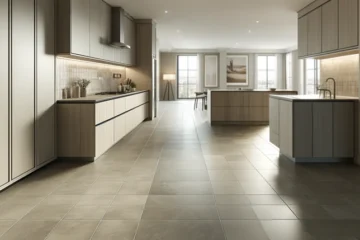How to Choose a Color Scheme for a Room

Choosing the right color scheme for a room goes beyond beauty. It’s about setting a tone, enhancing comfort, and defining the space to transform it into your personal retreat. But, how do you sift through endless options to find the hues that best match your space and style? Join us as we explore the interplay between color and design, aiming to uncover how you can select a palette that lifts your room to its full potential.
Grasping Color Theory
Understanding color theory is the first step towards a harmonious interior. It’s the science behind creating a balanced environment, involving the color wheel, relationships between colors, and their psychological effects. Whether you lean towards complementary, analogous, or triadic schemes, mastering these principles will guide your selection, ensuring your space looks and feels balanced.
- Complementary Colors: Positioned opposite each other on the color wheel, these colors create a dynamic, high-contrast look that’s full of energy.
- Analogous Colors: These hues sit side by side on the wheel, crafting a serene and cohesive atmosphere.
- Triadic Colors: Using colors that are evenly spaced around the wheel brings a vibrant yet balanced aesthetic to any room.
Helpful Hint:
Pick a base color you’re drawn to and use the color wheel to find complementary or analogous shades for a unified look.
Evaluating Space and Light
The impact of natural light on color cannot be overstated. Light hues can make a small room feel more spacious and airy, while dark shades add depth and warmth to larger areas. Assess the light your room receives to choose colors that amplify its natural charm.
Color Schemes for Different Room Functions
Align your color choices with the purpose of each space. Calming colors like soft blues and greens are perfect for bedrooms, promoting rest and relaxation. Meanwhile, lively shades such as reds and oranges can invigorate a kitchen or home office. Select hues that support the mood you wish to create for each room.
Integrating Color Trends Wisely
While personal preference should lead your color choices, incorporating current trends can infuse your space with a modern vibe. Use trendy colors as accents or in changeable decor elements to keep your space up-to-date without committing to a full redesign as trends shift.
Stats:
75% of people find rooms with a neutral base and strategic color pops more inviting and comfortable.
Exploring Color Psychology
Colors do more than just decorate; they evoke emotions and influence mood. Selecting your scheme with color psychology in mind allows you to craft spaces that truly resonate with the desired feelings and ambiance.
- Red ignites energy, ideal for dining and social spaces.
- Blue, known for its soothing nature, suits bedrooms and bathrooms.
- Yellow introduces joy, perfect for kitchens and informal dining areas.
- Green creates a sense of balance, making it a great pick for living rooms and studies.
Analyzing Your Space’s Natural Characteristics
Consider your room’s architecture and the natural light it receives. This evaluation can steer you towards colors that complement your space’s inherent qualities, ensuring the scheme feels right at home.
Building a Cohesive Palette
Adopt the 60-30-10 rule for a balanced color scheme: 60% dominant color, 30% secondary color, and 10% accent color. This formula ensures a layered, visually appealing space.
Helpful Hint:
Utilize a color wheel or digital tools for finding harmonious schemes, including complementary, analogous, or triadic combinations.
Adapting Colors to Room Mood
The room’s function significantly influences the ideal color scheme. Choose calming hues for spaces meant for relaxation and brighter colors for areas requiring energy and focus.
Marrying Trends with Timelessness
Opt for neutral bases to infuse flexibility into your space, allowing room for trendy colors in accents and textiles. This strategy keeps your space both stylish and adaptable.
Sampling Colors Before Commitment
Test your chosen paints in the intended space to see how lighting affects their appearance at different times. This approach can save you from regret and ensure satisfaction with your color choices.
Stats:
62% of homeowners regret not testing colors under varied lighting, underscoring the value of this preparatory step.
Pros and Cons of Choosing a Color Scheme
Pros
- Enhances the aesthetic appeal and overall mood of the room.
- Can make small spaces appear larger and more inviting.
- Personalizes your living environment to reflect your style and preferences.
- Improves the psychological comfort of the space, affecting mood and well-being.
- Increases home value and appeal to potential buyers or renters.
Cons
- Choosing the wrong colors can lead to dissatisfaction and the need for re-painting.
- Color trends change, which may require updates to maintain a modern look.
- Personal preference for bold colors might not appeal to everyone, affecting resale value.
- Requires time and effort to test colors and create the ideal palette.
- May incur additional costs for professional consultation or multiple paint samples.
Infusing Personality into Your Scheme
Let your color choices echo your personal style and experiences. This not only personalizes your space but deepens your connection to it, making your home truly yours.
FAQs
Wrapping Up
Choosing the right color scheme for a room is more than just picking shades you love; it’s about creating a space that resonates with your personality and enhances your daily life. This journey involves understanding color theory, the psychological effects of colors, assessing the natural light in your space, and tailoring choices to the room’s function. While it’s exciting to draw inspiration from the latest trends, the key to a satisfying color scheme is selecting hues that reflect your unique lifestyle and preferences. Don’t forget the importance of testing your choices in your actual space and weighing the pros and cons to make an informed decision. As we wrap up this guide on choosing a color scheme for a room, remember, the best palette is the one that feels like home, promotes your well-being, and celebrates your individual style.
Additional Resources
- The International Color Consortium – Official site providing guidelines and standards for color management in the digital realm, essential for designers and decorators.
- Pantone – The leading authority on color, offering color systems and leading technology for the selection and accurate communication of color across various industries.
- Sherwin-Williams Color Visualizer – Use this tool to experiment with color choices online, helping you visualize the potential of your space before you paint.


